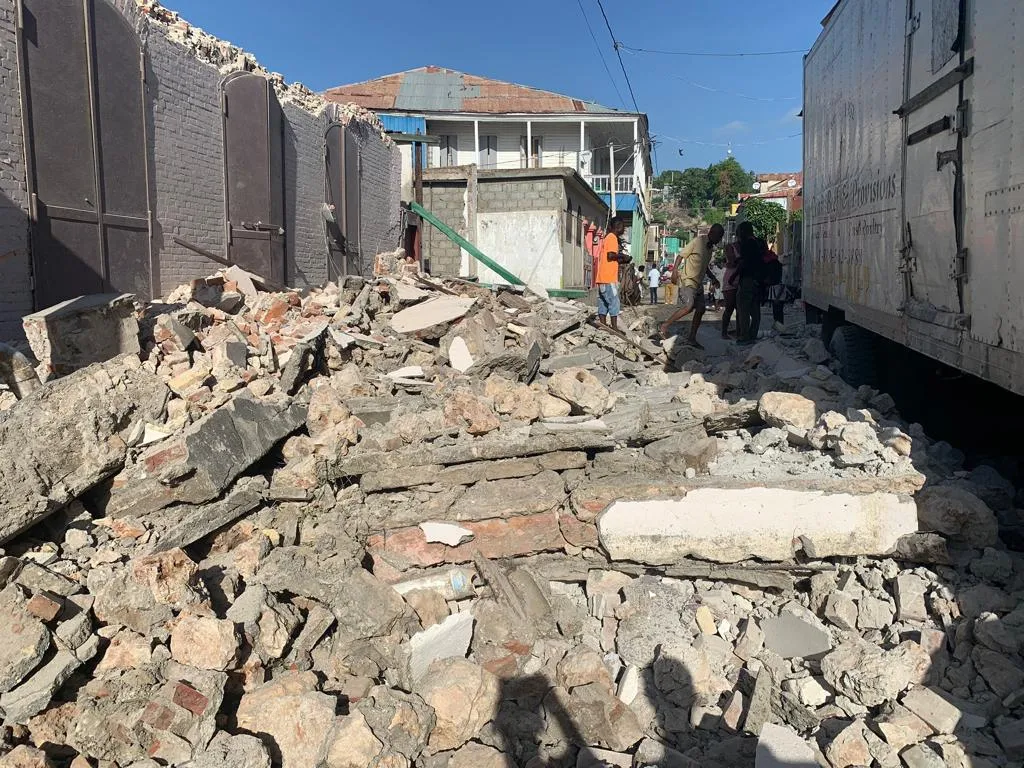September 14, 2021 — Yon ti kote apa. The people of Camp-Perrin, located just 15 miles north of the largest city on this southern Haitian peninsula, like to say “it’s a very special place.” Green in a denuded nation, peaceful in a sometimes volatile region, it prides itself on being different.
That uniqueness, say residents, who are among the hardest hit from last month’s powerful 7.2 magnitude earthquake, is what will get them through the worst disaster they have ever been through.
“It’s Mother Nature at work,” said Oblate Father Jean Pierre Constant Loubeau, the superior at the Missionary Oblates of Mary Immaculate, a Roman Catholic order that runs Mazenod College in Camp Perrin near Les Cayes.
In a commune that prides itself on valuing education, Mazenod College stands out not just because of its sprawling campus of large overhanging trees and brightly colored flowers, but its reputation.
For over seven decades, the school has been one of the region’s leading institutions, educating future leaders as well as priests, and providing educational classes for, among others, children whose parents have turned them over to other families to work as domestics, known as Restaveks.
In many way, its collapsed classrooms and crumbled sleeping quarters where two priests were trapped underneath the rubble before being rescued, underscore the loss throughout Haiti’s Tiburon peninsula, where more than 129,000 homes were damaged or destroyed, according to the government.
But instead of the despair found in many communities across the southwest, where life was upended on Aug. 14, there is — like in the developed urban reaches of Camp Perrin— hope amid the rubble.

